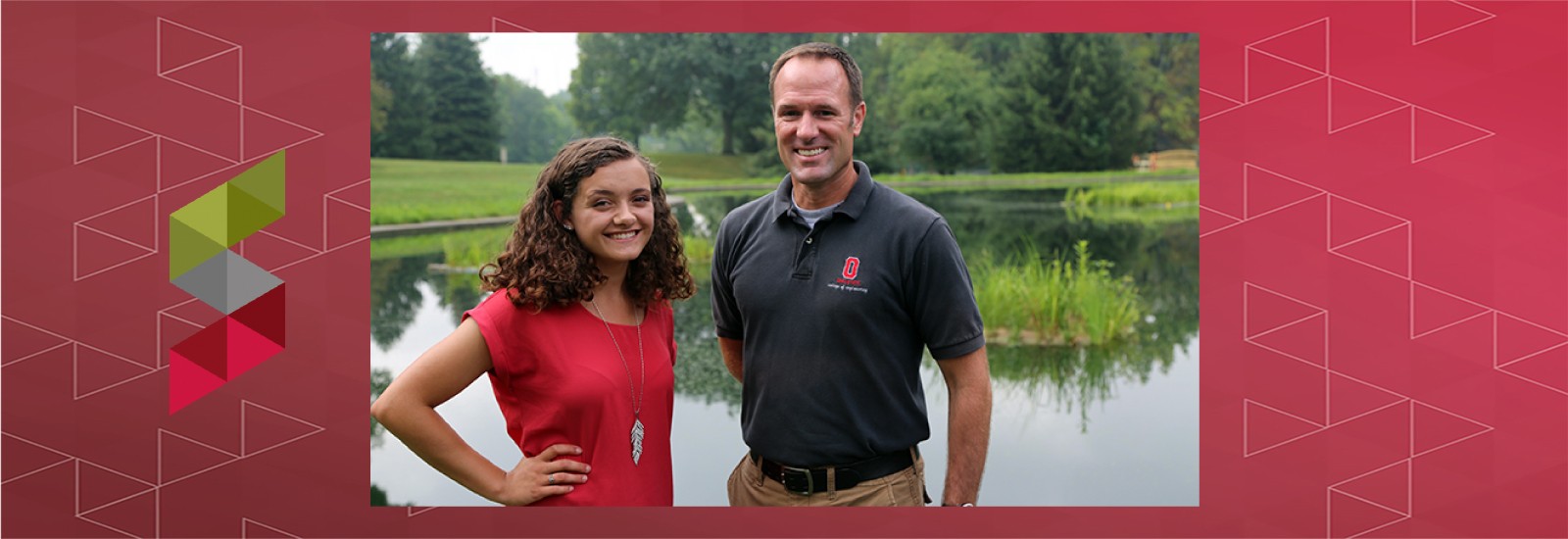Buckeyes are not the first plants that pop to mind when you think of ways to combat algae growth in municipal ponds. Buckeyes who are civil engineers, on the other hand, are exactly who the City of Lima called on to control the nutrients behind the algae making a nuisance of itself in the city parks.
City of Lima Stormwater Manager and Buckeye Jim Morrisey (BS 1998) wanted a sustainable way to filter out the phosphorus causing the algae blooms. He put the city’s engineering intern together with interns from the city’s stormwater partner, Allen Soil and Water Conservation District, and asked them to research a solution.
“I like an educational experience for these guys,” Morrissey said. “It's one thing to send your interns out to clean up pathways or to rake leaves, but if they can be involved in a program where they develop meaningful practices like this and then come back next year and are able to say that they were a part of this or that and it's still growing and doing a great job, that's good. That's what we're looking for in an internship.”
Jaden Addis, city engineering intern and sophomore in civil engineering of Lima, was the buckeye on the team of five. The interns researched possibilities and developed models, three of which were chosen in a brainstorming session with the professional engineers.
The end result of the summer project is three prototypes being tested in the Faurot Park ponds. All three have similar plantings, but different structures. The early front runner is the smallest model made of plastic bottles and coconut fiber. Morrissey would like to leave them in place and replenish them as they reach the end of their lifecycles to test their effectiveness.
“I hope that the interns take away the hands-on approach. Once they get in our field, there's a lot of hands on. When we have her out in the field testing soil for our dam project or building wetlands, there's a lot of quick thinking but also resourcefulness,” he said. “It is easy to read about this but to put it into practice and to see it actually function, I think that's what the greatest takeaway from this should be and anything that's going to help out the environment is right on.”
Building floating research labs was not the only thing Addis did in her three months with the city. During her internship, she was exposed to everything from stormwater projects, to the bypass being constructed, to tree work and traffic signals. The broad experience helped cement her plans to work in the public sector after graduation. The wetlands project is one she knows she can transfer to her future job sites.
“I think the wetlands project will help a lot with the experiences that it gave me and it shows me that this will work if I need to use it somewhere else,” she said. “For instance, if I worked for a different city or a different county, this would be an environmental way to help the ponds.”
Read more about Addis' experiences as an engineering intern in the City of Lima.
